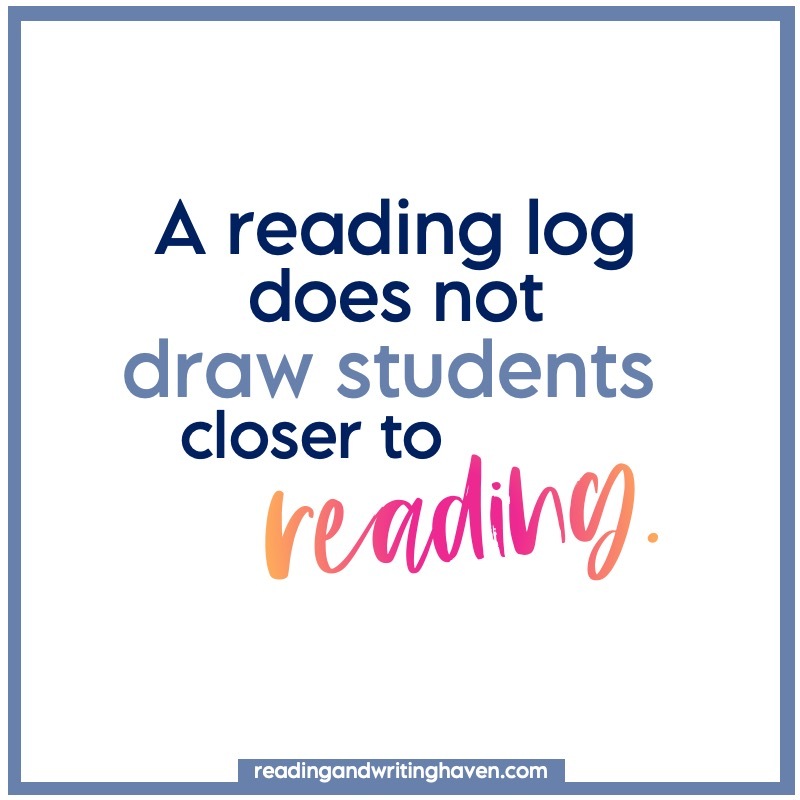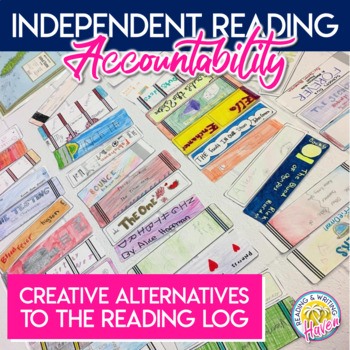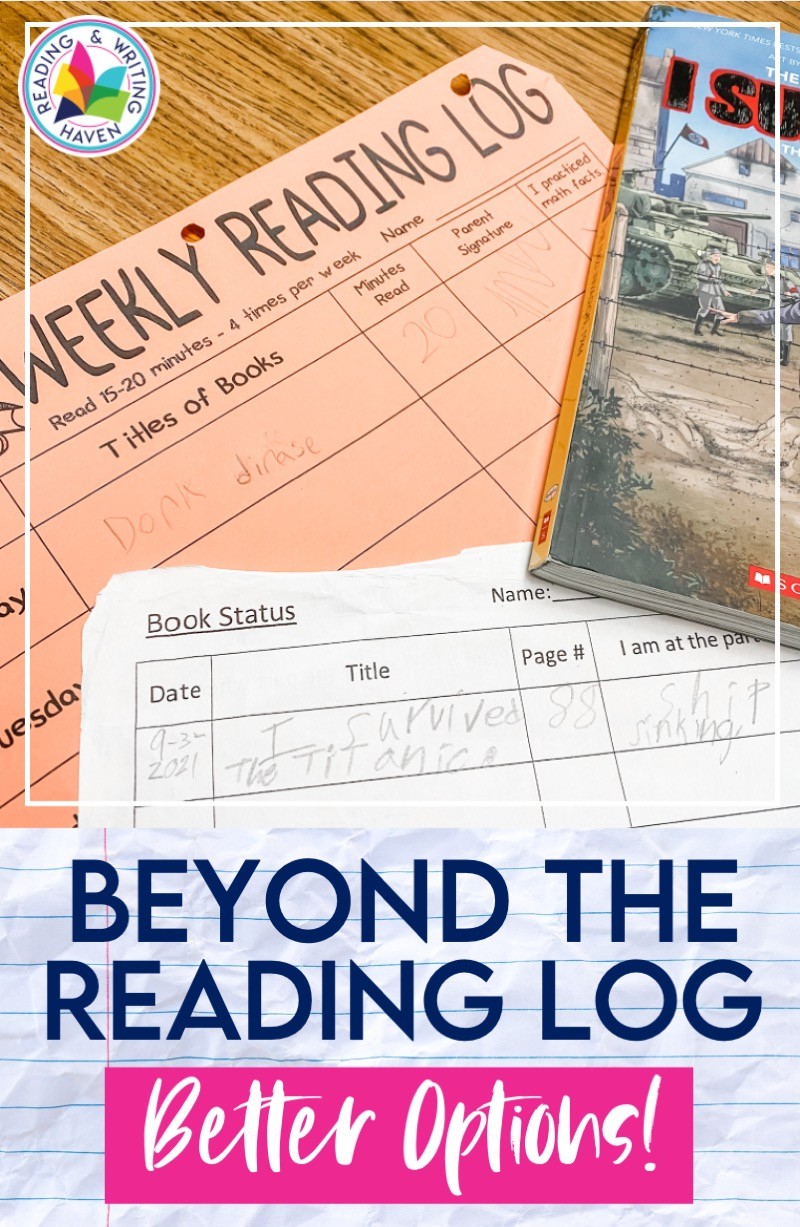Why We Need to Say Good Riddance to the Reading Log Forever
Inside: Have reading logs on your mind? Still wildly popular, reading logs have serious negative impacts on our students’ relationships with reading. This post is full of honest answers about why the reading log has no place in the classroom.
Have you ever been deeply engaged in a book? Looked forward to reading it every night before bed or found ways to sneak in as much of the yummy plot throughout the day as possible?
Now, imagine someone has told you that you need to record the number of pages you read, the title of the book, and a short sentence summarizing the plot every day you read. How does this new layer of accountability impact your relationship with the book? Does it make you want to read more?
Definitely NOT. To be honest, it kind of makes me not want to pick up the book at all.
It’s critical that we consider the impact of reading logs on our students. Reading is kind of like a dance…it’s a relationship formed between the pages of the book and the reader’s mental and emotional state. When students are required to record every interaction they have with a book, it interrupts the dance. It can even create disenchantment with reading.
You may be wondering…then why are reading logs so popular? Let’s dig into some of the reasons and explore better options for each.

Reason 1: Accountability
Many people like reading logs because they are a form of accountability. They are a way we can “make sure” students are reading.
The issue? Just because students sign their name to a paper, does that really mean they are reading? Does it mean the reading is quality? Does it mean they are growing in their identity and relationship with reading? Can it prevent fake reading?
To all of these questions, the answer is no. Students are experts at sniffing out busywork. If you have children at home who truly enjoy reading and have developed a habit of reading regularly without being asked, you’ll often hear them asking, “Why do I have to write down what I’m reading?” when assigned a reading log. They do this because reading logs are not authentic.
In life, we don’t stop before bed to write down what book we are reading, what page we are on, and a one-sentence summary. We just enjoy the book! It’s what keeps us coming back for more.
Try Instead:
Teachers can add layers of accountability that are more personal and authentic. Reading conferences are an excellent way to shape a positive reading culture, motivate students, and build relationships.
We can also ask students to share what they are reading independently with others by building in impromptu book talks. Have students share what they are currently reading and a specific detail: a part that made them laugh/think/upset, a favorite quote, or who a character reminds them of.
And, include parents! If parents understand the value of reading and that the expectation is for students to read for enjoyment twenty minutes each night, they can be our partners who bridge the gap.

Reason 2: Tracking Volume
For some, reading logs are a convenient way to track the total volume of students’ reading. Reading research has shown that reading volume is one of the best indicators of reading success. When students read texts they enjoy and can be successful with, they grow.
But, those who enjoy reading and do it often will quickly become annoyed with the reading log task. Students who are still learning to love reading can feel inadequate when reminded of how they didn’t meet the reading goal for the day or of how their friend read 50 pages but they only read 10.
Try Instead:
There are other ways to track reading volume that are more effective than a reading log. When students finish reading a book, they can add a book spine to the class wall to track collective reading volume.
Personally, I love using a reading ladder and bookshelf metaphor. It respects students’ reflective and goal setting process when it comes to who they are as a reader right now and where they want to go. In short, students record the name of a book they complete or abandon on their bookshelf. In doing so, they also consider their book diet and how they can expand their palette.
Students can add book spines to the wall and update their reading ladders during class once a week, bi-weekly, or once a month. This process feels like more of a celebration of reading than a punitive measure, and it helps students to continue developing their reading identities both individually and as a community of readers.

Reason 3: Weekly Grades
Reading logs are a convenient way to collect weekly grades for students. But. What does that grade show about student learning? It usually doesn’t connect to standards, and it’s often a completion grade.
Often, reading logs include a section where students have to write a short summary of what they’ve read that day. This summary is a lower-level thinking task that is supposed to reflect comprehension. Writing a daily summary (even a short one) is such a boring task for us to ask of students!
Why not ask them to read nightly, and then when they come to class, pose a high-interest question as a bell ringer and have them turn and talk, sharing their answer as it relates to what they read the night before.
What is the setting of your book? Does the protagonist enjoy living in this setting? How do you know? How does the setting cause limitations or provide freedom for the characters?
This type of activity still provides a window into thinking, builds a stronger reading community, and engages students in higher level discussion about books. (…which keeps them coming back for more!)
If we want weekly grades for reading, there are better options.
Try Instead:
If you teach reading mini lessons, students can apply those skills and strategies during their independent reading time. During a reading conference, group discussion, or even in a reading response journal, we can ask students to show how they are implementing a reading skill with their book. Exit or entrance slips and graphic organizers are also great ways to quickly gather information on students’ progress with reading standards.
It’s time to say good riddance to the reading log…forever.
Reading logs don’t work for the vast majority of students. More often than not, they push good readers further away from books, and they do nothing to draw reluctant readers in. Plus, they really don’t give teachers any valuable information we can use to nudge students along the learning continuum.
Readers find books they love, flip the pages hungrily, and often doze off dreaming about the characters and storyline. How can requiring students to record every interaction they have with a book possibly enhance that authentic experience?
As educators, we need to consider healthy alternatives to the reading log that will solve the issues of accountability, grading, comprehension, and volume. Our goal is always to promote a reading culture that inspires students to read, reflect, and repeat.
If we absolutely must use reading logs, two shifts may protect the relationships students have with reading. One, let’s not take them for a grade. And two, let’s only ask students to fill them out at school.
Better Alternatives to the Reading Log
Create a healthy reading culture and still have a window into students’ reading progress, volume, and diet with these creative alternatives to the reading log. Used wisely, these resources can begin to shape a positive reading culture and help to build relationships with students.

